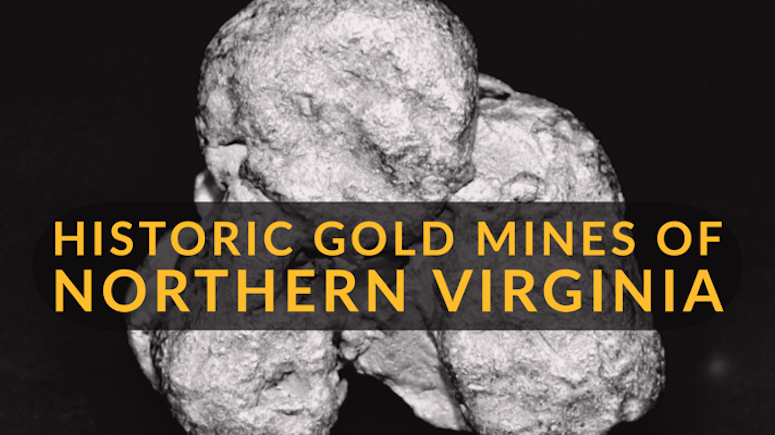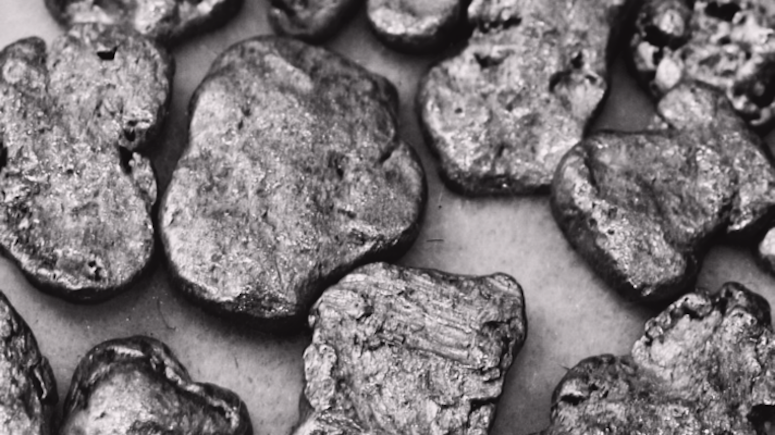
There is a distinct band cutting across Virginia that holds most of the states gold deposits. Just east of the Blue Ridge Mountains stretching from southwest to the northeast, across the middle of the state you will find some of the richest gold deposits on the East Coast. Many of the states richest mines are just outside of Richmond and Fredericksburg.
Thomas Jefferson found gold in Virginia way back in 1782, well before any of the major gold rushes would occur. Over the coming century, miners would find many rich gold deposits throughout Virginia.
Today there is very little mining here. Many of the best sources of gold have been depleted, but modern-day prospectors can still find gold in many places. Whether crushing ore samples from the old hard rock mines, or panning and sluicing the gold bearing creeks and rivers, there is still some gold waiting to be found here in Virginia.
1. White Hall Mine
The gold that Thomas Jefferson referenced finding in 1782 was a 17-pennyweight piece of gold ore that was picked up along the Rappahannock River. This was likely ore from the White Hall Mine in Spotsylvania County. Although limited information exists about the early workings of the mine, it is known that considerable gold was found here.
2. Franklin Mine
This was the largest and most productive mine of several mines located in Fauquier County. It began operating in 1825, and for the first year gold was plentiful near the surface of the ground. Strip mining was productive and produced over $1,000,000 in gold in just the first few years. Fires and flooding slowed things down, but operations continued on-and-off for many decades and even up through the Great Depression.
The Deep Run Mine was another rich producer in Fauquier County, and many of the creeks in this county were worked extensively with good results.

3. Tellurium Mines
Three mines (the Tellurium, Moss and Busby) all operated within a mile of each other. Placers were worked along the Busby Branch before lodes were discovered nearby. Quartz/mica schist veins running through granite contained free-gold that could be crushed from the ores. Of the three mines, it was the Tellurium Mine that proved to be the richest with the most extensive ores. About 10,000 ounces of gold are credited to this mine prior to the Civil War.
4. Vaucluse Mine
One of the richest early gold mines in Virginia was the Vaucluse Mine, situated in northeastern Orange County. Many creeks in the vicinity of the mine west of Fredericksburg yielded gold and were worked with great interest for many years. Prior to the start of the war, anywhere from 50,000 to 70,000 ounces of gold were mined from the lode deposits at the Vaucluse Mine.
5. Collins Mine
A rich placer gold deposit was found near Little Byrd Creek in Goochland County. Hydraulic mining was done early on to strip away overburden and expose bedrock for miners. In later years a dragline dredge was brought in to process gravels.

Placer mining operation at the Collins Mine, VA.
6. Moss Mine
Another rich mine in Goochland County was the Moss Mine, about 1 mile southeast of Tabscott. The Richmond Mining Company punched two small shafts and followed veins that produced rich ores. The gold was discovered in 1835, but most of the mining took place following the Great Depression.
7. Edith & Bertha Mines
Near the Collins placer mine was the Edith Mine as well as the Bertha Mine. The placers on Big Byrd Creek were traced to rich quartz veins that warranted a stamp mill for processing the free-gold. In later years, cyanide processing was used on the old tailings to extract additional gold that was missed. (This was a common occurrence at many of the Virginia mines.)
America’s First Gold Rush to the Appalachian Mountains
The First Gold Nugget Discovered in the US
